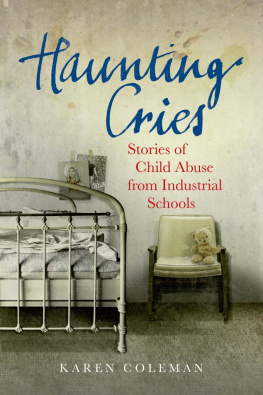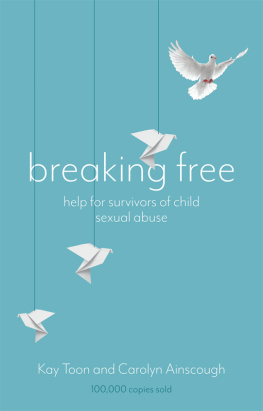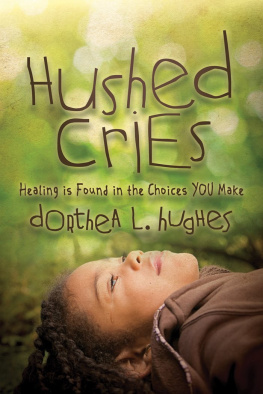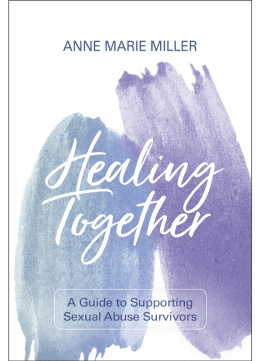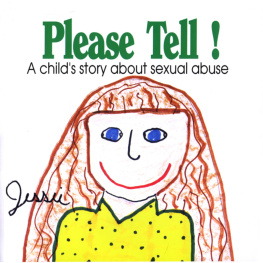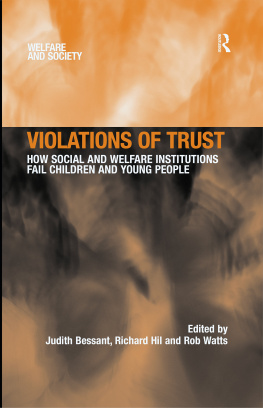
This book is dedicated to all those children who were abused in Irish religious institutions.
Chapter 1 
EXPOSING THE ABUSE: THE RYAN REPORT , MAY 2009
T here is a lane in the heart of Connemara, Co. Galway that leads from the village of Letterfrack up into a wooded area, where a small graveyard is tucked behind the trees and hidden from the main road. A narrow gateway opens onto a patch of ground where small headstones in the shape of black marble hearts nestle in the grass. Each headstone carries the name of a boy and the year he died. Seventy-nine boys are buried there in total; all were inmates of the notorious Letterfrack Industrial School that was run by the Christian Brothers. The first boy buried there died in 1891; the last in 1956. Their ages range from four to 16.
This graveyard is not a place of rest. It is instead a burial ground of abuse where the ghosts of the boys interred there seem to hover in silence as the visitor sheds tears for their stifled cries for help. It is a place laden with such profound sadness it provokes a speechless mix of disbelief and guilt; disbelief that religious orders could have been capable of such gross inhumanity against children in their care, and guilt at being part of a State that participated in that abuse through ignorance, poverty and negligence.
Letterfrack Industrial School graveyard is a spine-chilling illustration of religious child institutional abuse and an example of how Ireland allowed vulnerable children to be destroyed by tormentors masquerading as guardians. A walk along the lines of black hearts reveals a journey of suffering. Young lives struck down year after year. In 1918 alone 10 boys died in Letterfrack Industrial School; seven died within 20 days of each other in that year.
Those seven boys included Michael Bergin, who died on 13 November 1918. He was 15. Michael Sullivan died seven days later. He was 14. Joseph Boxan shut his eyes for the last time on 26th of that month. He was nine. And Thomas Hickey was only 10 when he died on that same day. Two days later Michael Walsh took his last gasp at just 11 years of age. He wasnt the only one to die that day. Anthony Edward, who was the same age as Michael, also passed away. Four days later William Fagans life was also cut short when he was only 13. Today they all lie together in Letterfrack.
The Christian Brothers put these boys deaths down to influenza-pneumonia. That explanation may be plausible; after all the Spanish flu of that era claimed millions of lives worldwide. But the boys premature deaths occurred against a backdrop of unremitting hardship at Letterfrack, where a climate of fear propagated tyrannical and sadistic behaviour among the Christian Brothers running the place. One hundred boys are estimated to have died in Letterfrack from the time it first opened its doors for business in 1887 to its closure in 1974.
For decades stories of abuse told by former inmates of industrial schools such as Letterfrack were dismissed by many in Ireland as the false rants of people embittered by their circumstances. But on 20 May 2009 their accounts were finally vindicated when the report of the Commission to Inquire into Child Abuse was published. The five-volume tome is a shocking account of child abuse that took place in religious industrial and reformatory schools and other institutions from the 1930s up to the time of their closure.
The brutality of Letterfrack cited in the Ryan Report exposed Irelands dreadful history of child neglect. Physical, emotional and sexual abuse were systematic there. Punishments were meted out for minor misdemeanours. Boys were battered by Brothers who abused their positions of power and vented their anger on children too poor and vulnerable to complain. Inmates who absconded in winter were hauled back, stripped of their clothes, hosed down in the yard and left to stand in the freezing cold in their underpants for hours; other absconders had their heads shaved and were subjected to perverse forms of solitary confinement, which meant their fellow inmates couldnt talk to them until their hair had grown back. Bed-wetters were ordered to drag their wet mattresses out into the open yard where they were humiliated by their fellow inmates. Boys were lashed with leather exposing the abuse straps, tyres, fists, legs and whatever other instruments of torture the Brothers could get their hands on. They were made to work as child slaves on the bogs and in the workshops and they were never paid for any of their hard labour. The Christian Brothers who didnt participate in this sadistic type of cruelty colluded in it by remaining silent. Few spoke out against their superiors and even when they did their pleas were largely dismissed. The reputation of the Church and the Congregation took precedence over any form of justice for the children in their care.
One former resident of Letterfrack told the Ryan team about the reign of terror that pervaded the school when he was there in the 1950s and early 1960s.
From the time you went into that you lived in fear, you were just constantly terrified. You lived in fear all the time in that school, you didnt know when you were going to get it, what Brother was going to give it to you, you just lived in fear in that school.
Another former resident described how it was awful, it was very very cold, it was very very lonely, but the worst thing about it all, it was so scary. Letterfracks endemic violence cultivated a culture of bullying among the boys themselves with peer sexual abuse at the extreme end of the spectrum.
you had to fight for survival because there was a lot of bullying and a lot of stuff going on. You had to be on your guard all the time because there was bigger kids and stronger kids, different kids and different types. Rough kids and bad kids; there was all different types.
Yes, it was dog eat dog. It was survival, you had to do everything to survive, you know. You had to fight, scratch, you had to do everything for survival. There was no love or affection or caring from anyone, you know. And there was no one to talk to, you just had to form your own way of survival.
Letterfrack was one of 21 religious institutions extensively documented in the Ryan Report. Its publication shocked the Irish nation; people reeled with disbelief as they read about the staggering levels of physical, sexual and emotional cruelty children endured in these ghastly places since the 1930s. The Report shook the already battered reputation of the Catholic Church and it highlighted the negligent role the Irish State played in the incarceration and abuse of children. In the weeks following the Reports publication, people tried to comprehend how vulnerable children could have been treated in such an appalling way. Ireland was swamped by a tsunami of shock and grief.
The Commission to Inquire into Child Abuse marked a watershed in contemporary Irish history. It validated the stories of religious brutality that former residents of these institutions had been describing for years and it raised numerous questions about the Catholic Church, the Irish State and Irish society. People wondered what kind of a country they were living in and even the most committed Irish Catholics questioned their faith. The Report was the result of a nine-year investigation into the treatment of children in institutions run by religious orders from the 1930s to the present day. The nuns and Brothers who abused their power in these hellholes were exposed as sadists and rapists, bullies and misfits. The Ryan Report showed how the lives of thousands of people had been destroyed in these pious prisons, supposed to be institutions of care. The Report blew apart the smokescreen of moral perfection that the religious orders had hidden behind for decades and it illuminated the hypocrisy of their self-righteous preachings.
Next page
